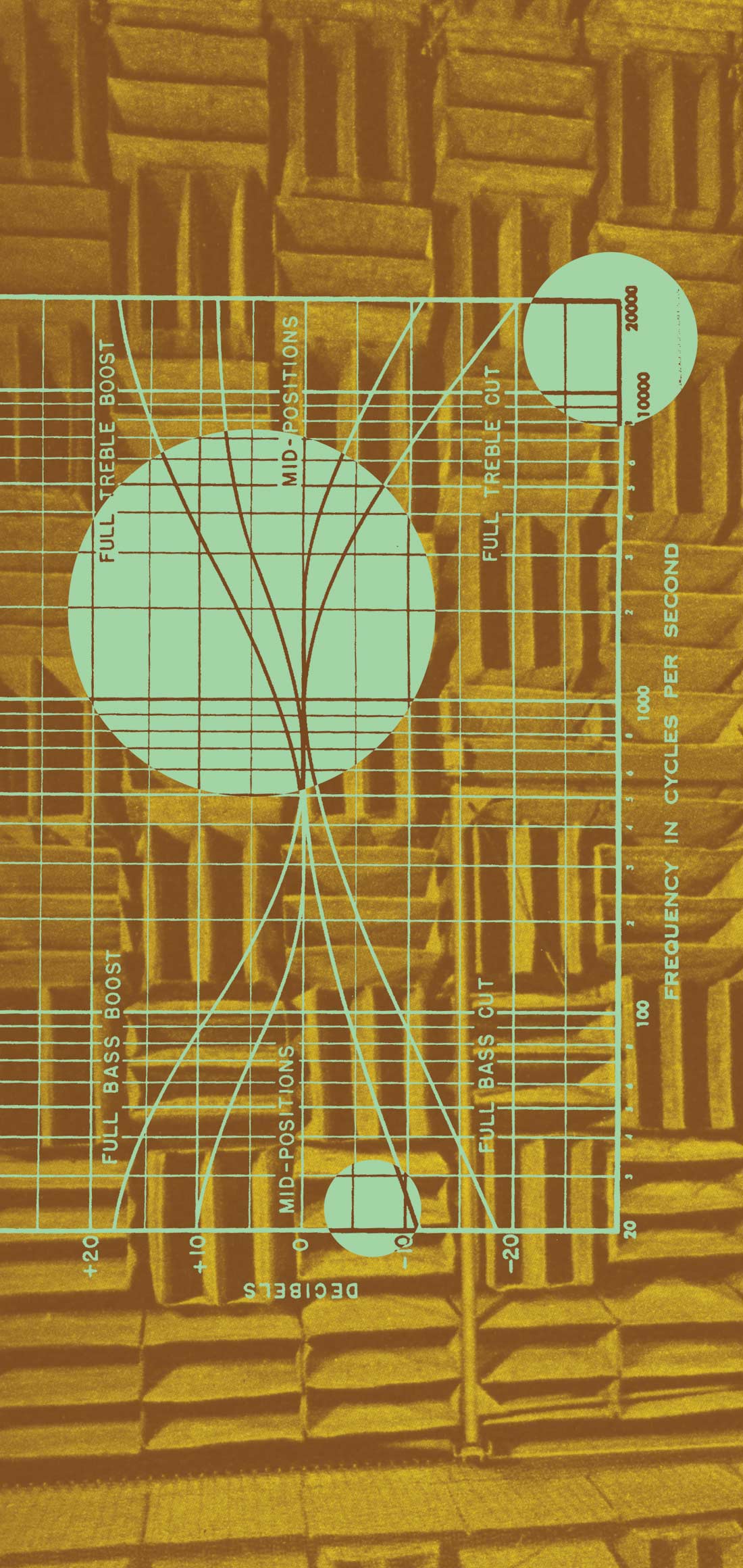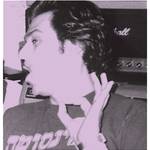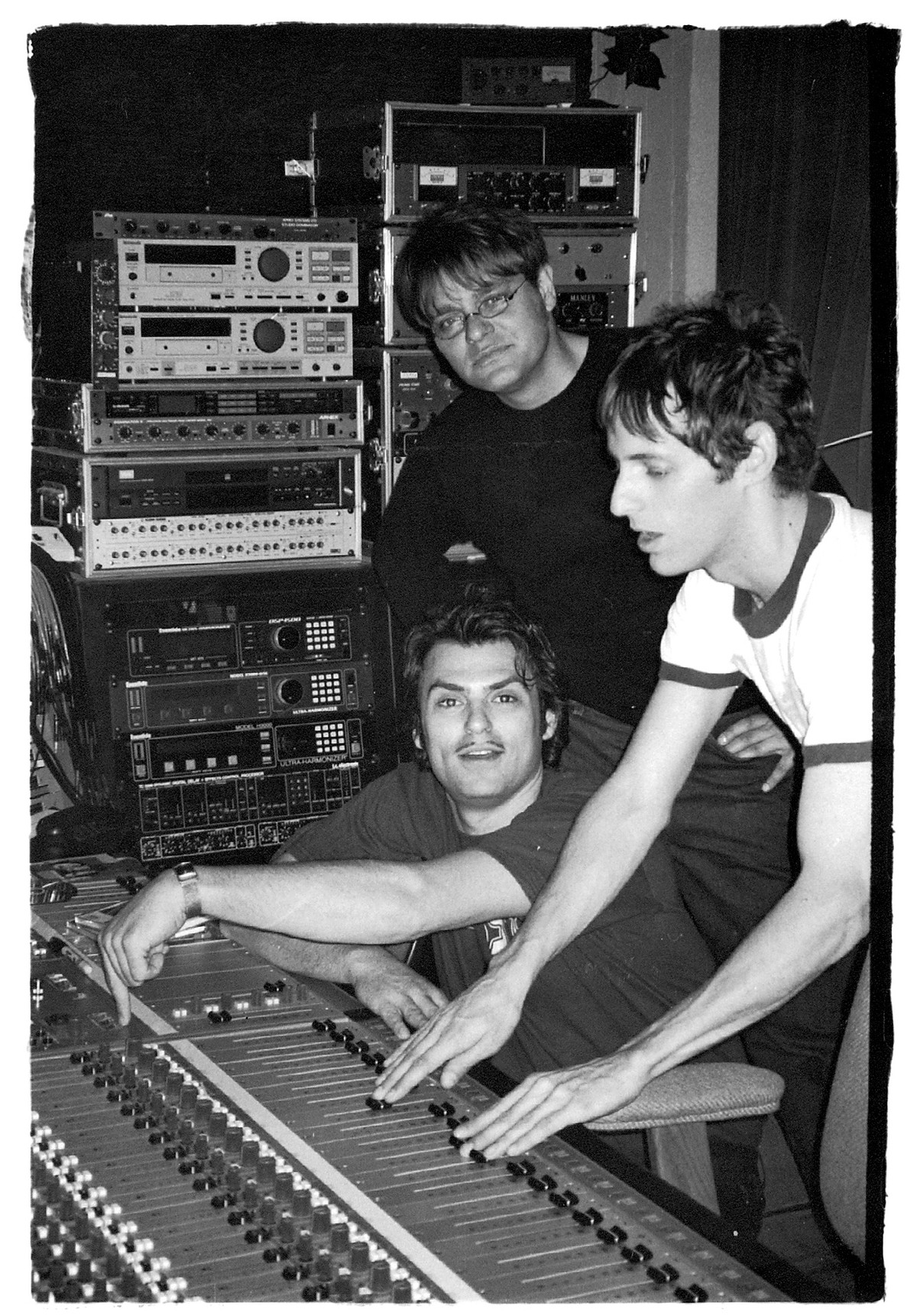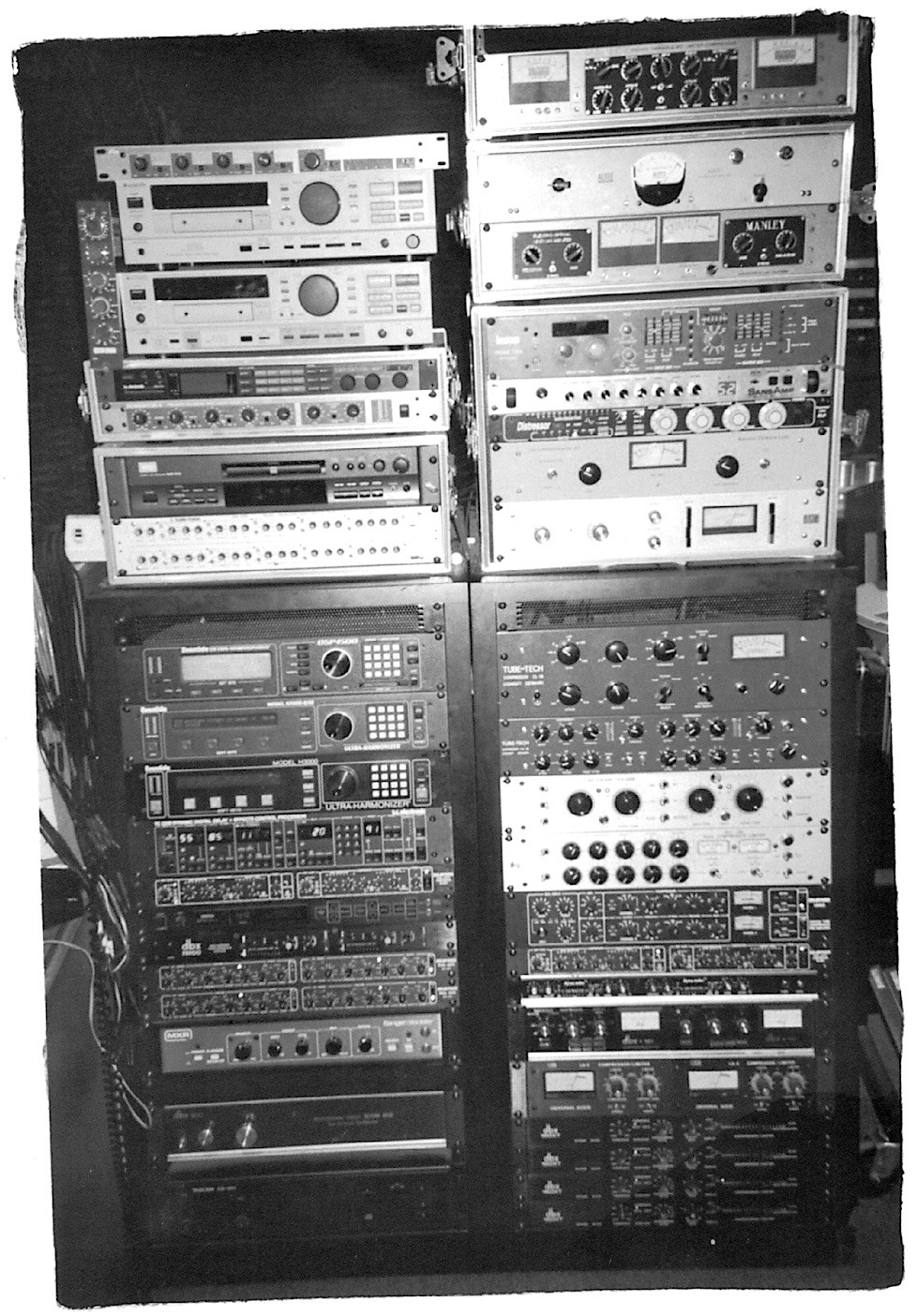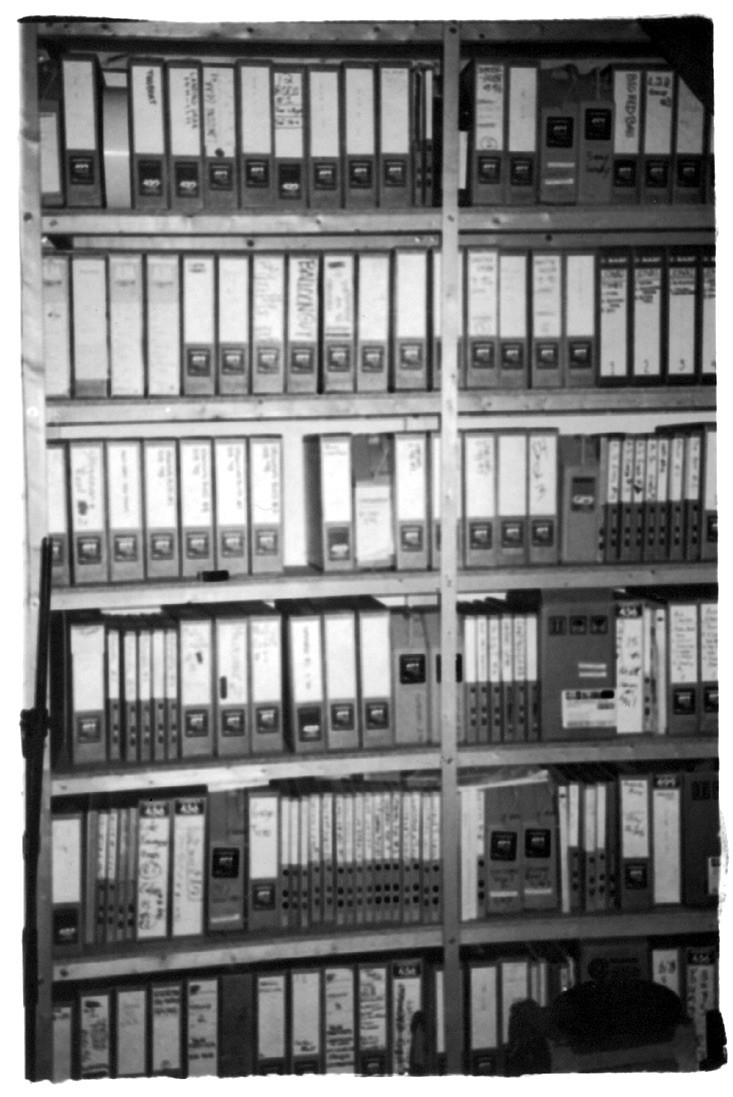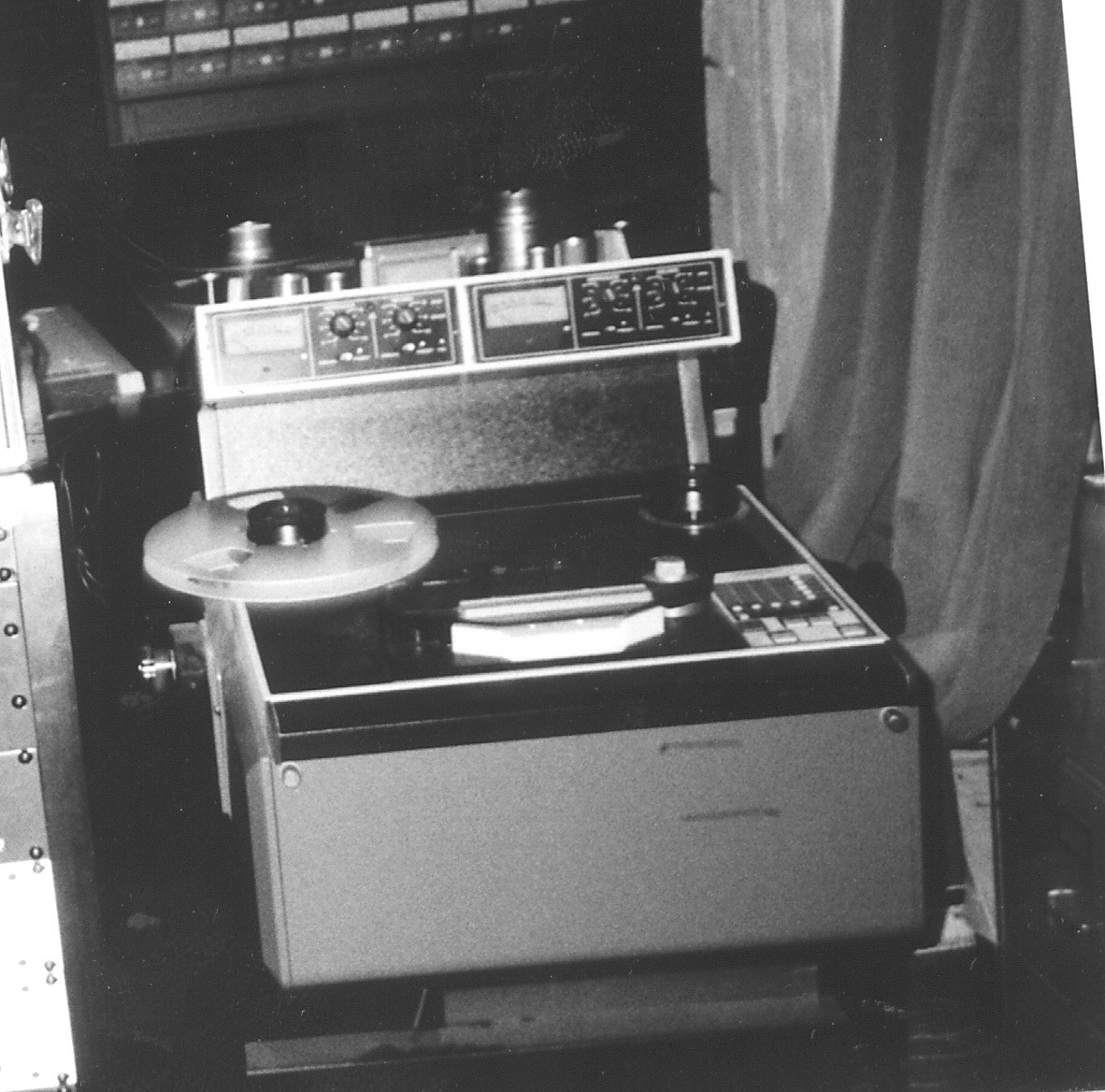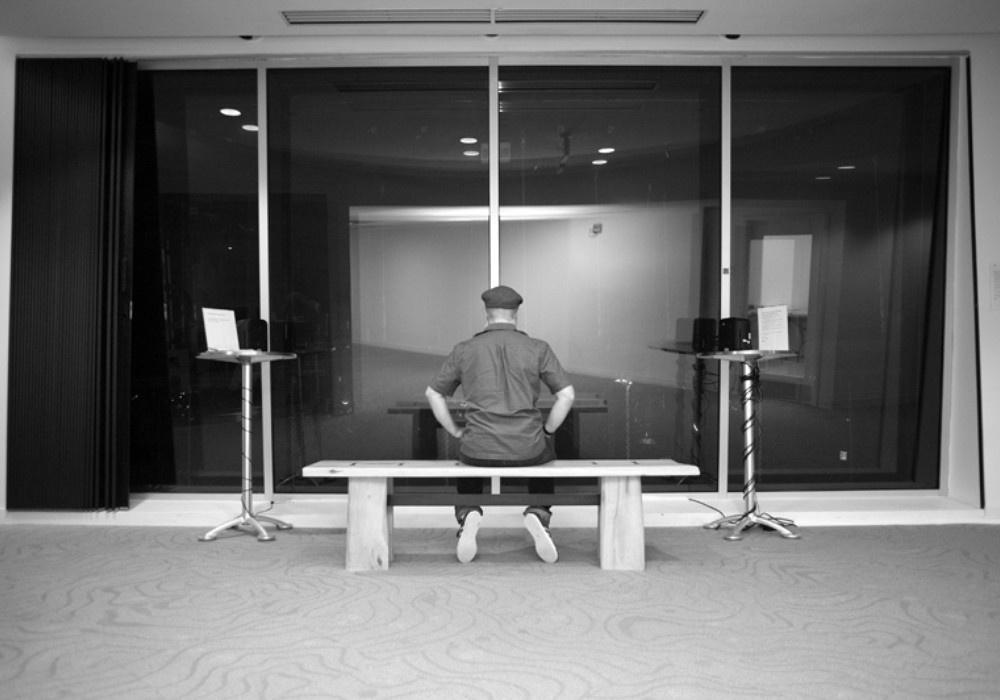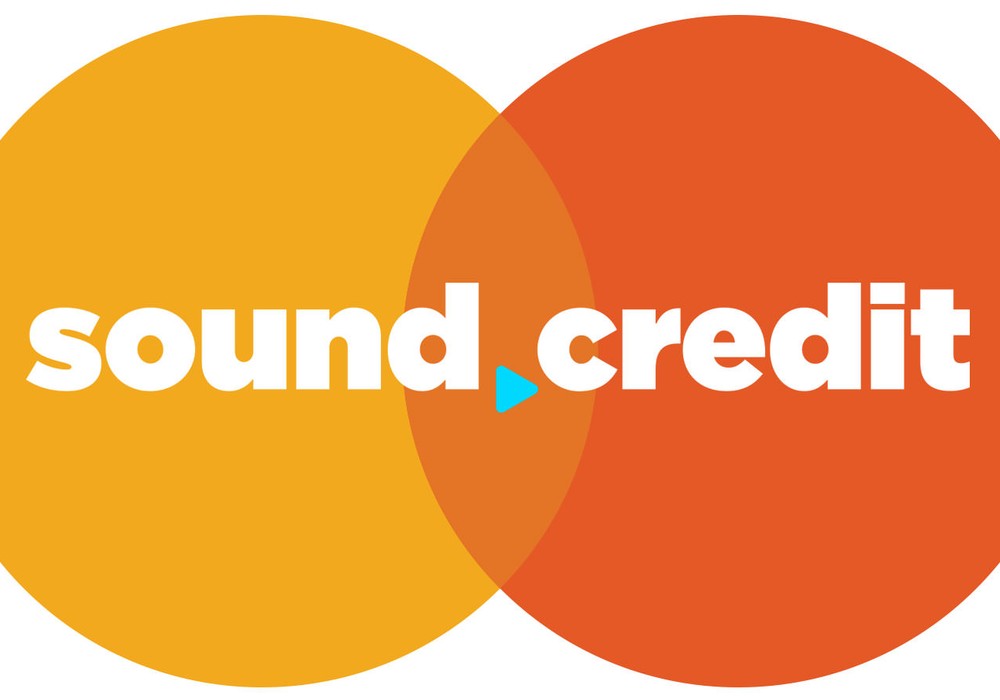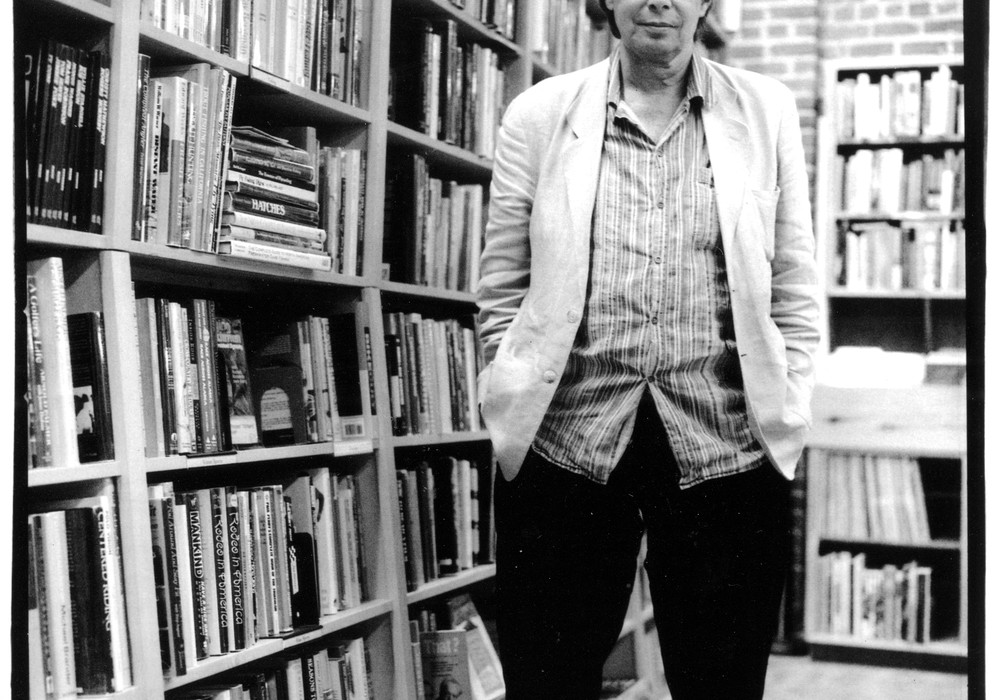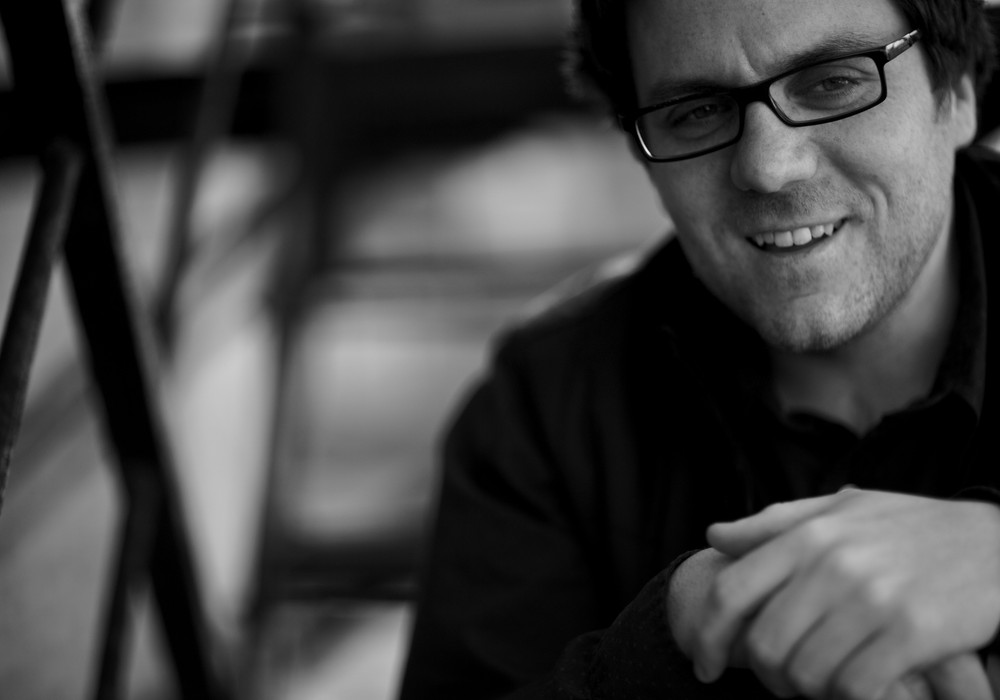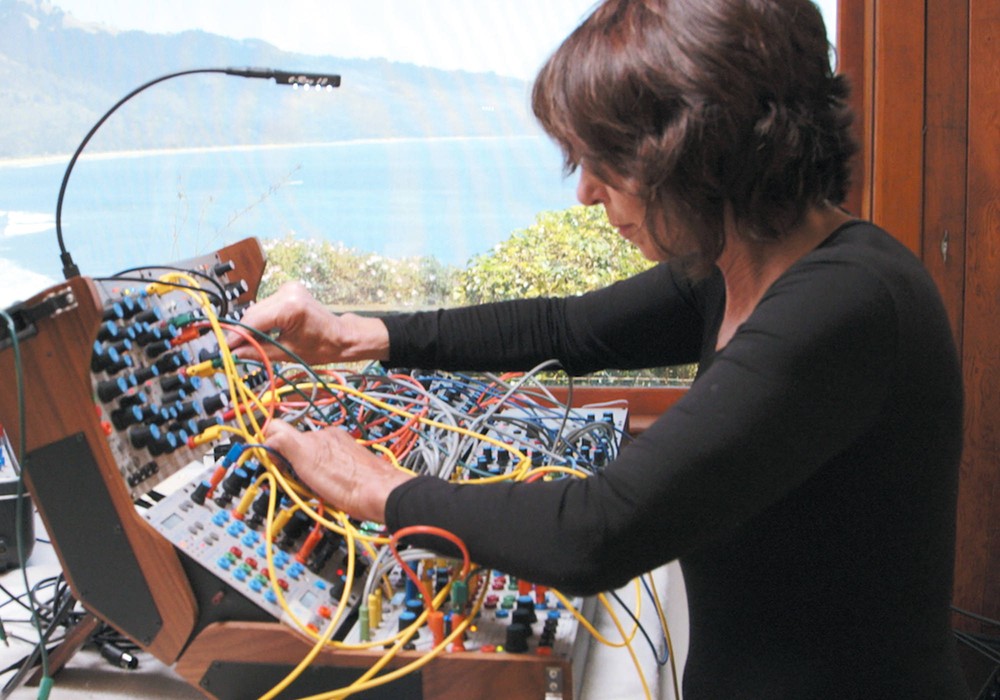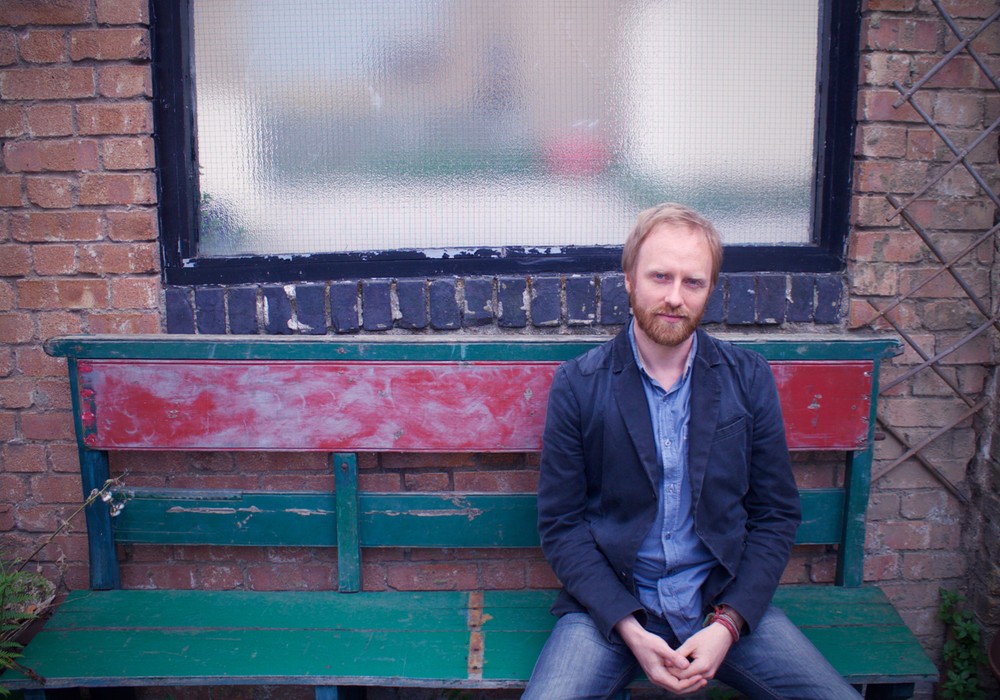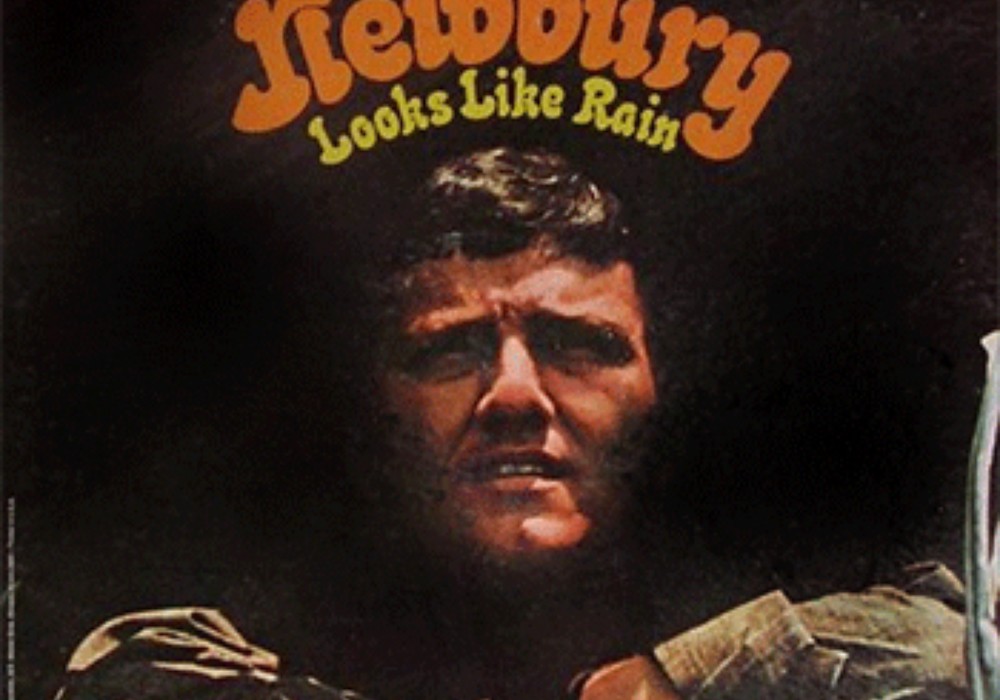Hey, we've never covered any studios in the Minneapolis area, so here we go. Plus, usual interviews seem to take the format of history and projects done; this one covers some lively and useful topics on mastering, gear, technicians and such. The cast of characters are: Jason Orris, formerly of the band Polara, now with The Hot Brian Hanna, formerly of the band The Hang Ups, now with The Hot Dave Gardner, formerly of AMREP studios, now with the Selby Tigers Dave also writes a cool column on DIY audio for Punk Planet magazine.
How many electrolytic capacitors does it take to recap a Neve 8128?
JASON: Approximately 8000. Including de-soldering that's 32000 soldering joints.
BRIAN: And that doesn't include 4 resistors per channel, 3 regulators per channel, so that's 9 more solder joints per channel. Did we replace all of the monitor card regulators?
JASON: Oh yeah, all of them. (Jason grabs a calculator) 32576 soldering joints give or take a few. It would have made lesser engi- neers mad.
BRIAN: I don't even want to think about how many chips we wound up swapping and changing and putting back in.
When you are testing caps and doing critical listening is there an audible difference in sound or performance between manufacturers or is a capacitor a capacitor?
JASON: Yes and no, the first guy who came up here left us in such a great state of disrepair that our board sounded like fucking crap.
BRIAN: He will remain nameless.
JASON: It was 2db down at 40 Hz, 15 dB down at 10 Hz and 30 dB down at 15K. The thing sounded like fucking crap, we went through and did critical listening of each of the components and picked one channel and recorded kick, snare, cymbals, and electric guitar. We with Steven Laisi of Tachyon-Neve expert just evaluated each time, each change and just built it up to the point where it sounds godly again.
DAVE: The important lesson that we all learned is that, when it comes to technicians, really smart people are not small and defensive, and that really smart qualified technicians are willing to answer your questions. They do not try to use fear as a tactic. They're able to communicate clearly what's going on, and are realistic about the time frame. And they are special people like Dave Dretlaw. I think the most important thing, the thing that has impacted me the most is the tech that thinks he completely knows what he is doing in all situations — this is the guy you should not have working with your stuff, because he will wreck it.
J: And freely admit that they don't know everything.
B: The important thing you need to know about a tech is that he's got to be a cool person you want to hang out with, because you are spend- ing a month with this person and if you have nothing in common and can't get along...
D: With a number of techs I've interacted with, if they approach it saying they have the answers and that there are simple solutions, those are the ones who, magically, things don't show up in the mail, nothing quite works right, it's a pattern that I see.
That must be Dave Dretlaw working on the board right now.
J: Yeah, he owns a sound company called Barclay Audio out of Northfeild, Minnesota. He is really the only game in town. The only tech that can be faced with any problem and pretty much fix anything.
D: Dave has saved all of our lives on a number of occasions in a number of ways and in a number of different places.
J: It's so important to have someone like that around because there are so many components n the signal chain and things are going to break down. You've got to just keep the shit fixed.
D: Contemporary recording equipment is, for the most part, disposable and so you're com- pletely reliant on people like Dave to contin- ue to work on what is essentially obsolete technology. It's basically radio and television technology from the '40s and '50s.
J: I was just talking to a guy that was a high level Neve guy and he was explaining that there was planned obsolescence. They want it around for 5 to 7 years; you throw it away and buy whatever is new.
D: Hence Digidesign's willingness to give you a thousand dollars for your ADAT towards a Pro Tools system. I think certainly the best lesson I've learned is that there's a lot to know and there's a lot more you should know.
J: The sad state of affairs is: How do people come up with the money to get a state-of-the-art facility and make a career out of it? I mean how do you do it? Your grandma dies, you're in a major label rock band or you're a trust fund kid. There's no way to put together a five hundred thousand to a million-dollar studio. And charge the kind of money that it takes to make that nut and still have a career. So it's a really weird scene that all of these business owners are in this doing it. And I feel so blessed that I was In Polara. It really restructured my finances. I would have been out of business by now if I didn't have those two years where I was making good money. I was one hundred and thirty thou- sand dollars in debt in the darkest day. There is probably four hundred and fifty thousand dollars worth of gear invested here at this point. And without the Polara gig I would have had to shut down. Our market will not support a super high buck room. There are a few of them out there. If and when I move the studio, and I have to start charging more, how much of my clientele am I going to lose?
And when you step up to the next level people are going to want to know what version of Pro Tools you're using.
J: If you look at the Billboard charts something like 90 percent of the recordings are done on 2 inch 24 track. And people know that you get that sort of sound quality, and sound color, with analog tape. Sure you can pop something onto digital and have perhaps, but not really, a mirror image. But there is a certain sound quality that you can get with a 2 inch 24 track that you cannot achieve with the digital platforms.
D: I think there has been a swing in the last year and a half. It seems that there's awareness among clients that they don't want to record digitally. They don't want to record on VCRs, because that's what they are, 8 track VCRs. That's the trend I see here, I don't know what it's like in other places.
I didn't see a computer in your control room.
D: I bought a Pro Tools system last year with the idea that it seemed interesting, having control over the signal chain, and it lived here for about 4 months. It was a 16-bit system and I didn't like the signal chain, and I did- n't like what it did what it did to the audio. It was mostly being used as a pre-mastering device. It's an amazing tool but it was sold to make the payment on the rebuild of our half-inch machine that was originally manufactured in 1982.
Not only do you have to be a musician and engineer; at that point you also have to be a computer guy.
J: Dave is actually pretty smoking on Pro Tools. He's paid his dues and has that part of it down. But at this point we are in search of the proper pre-mastering format, and is it going to fuck up your signal chain? We have another friend who has a Pro Tools 16 bit system that was fine but our ATR102 1/2 inch machine has made a huge difference in the sonic quality of the product that comes out of here. That thing does stuff to your low end and your tiptop high end that, when I heard it, it was like, "Oh my gosh this is how you make low end consistent and even." You can compress the snot out of it but this actually makes it sound even and beautiful.
D: I am fundamentally uncomfortable with having material archived on a digital format. There's no such thing as an archivable digital format, it does not exist. And it's strictly a matter of time — in 30 years there will be CDRs that will be playable and I can guarantee you that a vast majority of DATs will not be playable. Even if there is something to play them on. It's a crapshoot. There are tapes that are 50 years old that are playable, there are wire recordings that are 70 years old that are playable, there are wax cylinder recordings that are 100 years old that are recoverable, incredibly scratchy and bad sounding but recoverable. And acetate discs that are all playable so fundamentally it makes sense to have your masters be entirely analog.
J: I've had problems with DATs that are 7 to years old at this point, and they are funky. Nobody knows what 20 years will spell.I
I've noticed that a lot of the projects recorded here aren't mastered outside. Do you do your own in house mastering?
J: What we do a lot of the time is final master limiting and make final EQ decisions here. We do try to make a final product here. And it isn't necessary that it be mastered. Don't get me wrong; there are plenty of projects that come out of here that do go somewhere else to get mastered. But what we try do is make the product as good as it can sound. And save our clients money. The reason we are a team here is we are trying to achieve some kind of consistency so when you see a record that comes out of the Terrarium you know it's going to sound good.
D: The problem is that mastering used to be a physical craft. It used to be something that you had to do because you had to physically convert tape to a lacquer master. There is no one in the Twin Cities who masters. That does not exist; you are not making a production master you are making a pre-master. There are a number of people in town who consider themselves a mastering engineer, but there is no one in town I would consider a mastering engineer. That taken into account, there are a lot of people who say they master using digital audio workstations with varying degrees of success. I do pre-mastering work and have done some okay work and some not so okay work. It's a flawed process; so what you are left with is the reality of how people do records now. People aren't going to send their records to a real mastering house and a real mastering engineer. Left with that, I have to feel like when something leaves my hands it's as good as it can possibly be and then it will transfer across as many listening environments as possible, properly. And that it has what the people are trying to do artistically, because you can- not rely on what's going to happen to the signal chain afterwards. One project Brian was working on, they were debating taking this project that they had spent a decent chunk of change on (and did with a lot of integrity in the signal chain), they were talk- ing about spending less than $100 on mastering their record. And do it on a fundamentally flawed system. There's just a disconnect because people think they can do it on computers. And because there are a lot of people doing it, there's just bad stuff happening. I think that leaves you in a weird position. I would love it if everyone took his or her half- inch masters. If we edited half-inch masters and people took them. There are only two other facilities in town that can transfer half-inch masters. That's an industry standard and that's frustrating. I'm not saying good results can't come out of it, I'm saying I'm uncomfortable being billed as mastering a record, because I feel that I'm pre-mastering.
B: Jason and I process the end results. The equalizing, and types of limiting and compression. We're achieving what some other fucking hoo-haw that we don't know is going to try to do to our mixes. I want to do it my way and make it sound like it's on the radio and has already been processed that way.
J: We actually use the same master limiter that Bernie Grundman masters with.
D: Although his is pretty modified. What hap- pens now is you're left with someone with a TC Electronics Finalizer, which is a cool box and can do cool things, but people just smash it and are not listening in an environment where you can really listen to what you are doing. And stuff can get freaking wrecked. Too many times the whole transfer process, which is inher- ently what the mastering process is, has been lost and has been turned into this control issue where people are making decisions they don't necessarily need to make and trying to fix things that aren't broken. In the end you have things that are overly bright, poorly compressed, records that probably don't sound as good or like they did at the console. That's not to say that very bright, compressed records can't sound good. They can sound amazing. I just think the end result is that it gives a bad name to very compressed program material.
When you started this out, what were the one or two pieces of gear you wish you would've purchased right away, and after you got it you wondered how you could have lived without it.
B: Look at the signal chain. A good microphone. A good mic pre- amp and a kick-ass compressor. With those three elements you can overdub onto a good tape machine anywhere.
D: Monitors are incredibly important.
J: The Genelec system we got with the subwoofer — that's when I started making good sounding records. I had been struggling on Yamaha NS10s for years and years. Shoving in all sorts of low-end crap that just didn't belong. When I got this full range system it was probably the most critical piece of gear that really opened things up for me.
As far as mic pres and compressors, what are some good reliable products that a guy can just walk into a store and buy new?
D: I know people who really like those RNC compressors. I've never used them. I've looked at one with the lid off. It's a guy who makes them in Austin and sells them by mail order. I've heard nice things about those, as far as affordable things.
J: The Brent Averill stuff is awesome. His API stuff is pretty kick ass. But you know API is still in business. You can get a two-rack space that has 1 512B and one 525 com- pressor or a 550E compressor or a 560 if you like. That shit smokes 2 channels for 12-15 hundred bucks. [Actually closer to $2200 at Mercenary Audio]
D: I have a Manley compressor. When I went to buy that I knew I wanted a 2-channel LA2A clone. It came down to the Manley and an Anthony Demaria Lab. When I found out that Manley did all of their stuff in house and hand wound all of their transformers that was what made my decision. I had heard the ADL's and I'd never heard the Manleys. That is the one piece of gear that I would never even for a second think of selling and never regretted purchasing. And that piece of equipment has done nothing but be reliable and absolutely amazing. That has reinforced to me that quality design has to inherently be followed by quality production, and that happens in house and under adequate supervision.
Have you heard the Phoenix Audio GTQ2 2 channel mic pre with a built in EQ.
D: Geoff Tanner of Phoenix Audio I would tend to give slack to. He's an old Neve guy. I've never heard anything bad about him. And he's been totally cool to Jason and me via e- mail, even though he doesn't work on our era of Neve boards. He has been more than will- ing to take his time and be free with his information. I think you can make a decision about people and their products by the way they run their companies. People will occasionally let you down.
J: I'm a big fan of used gear but I'm terrified of it now. To know that, frankly, we are going to have to recap our 1176 our 161's our LA4's, after learning everything I have about planned obsolescence in audio design, damn straight we have got to go through and recap that shit. And recapture the sound. The electrolytic designs of the past did not have the longevity due to the heat. That's how they die; it's the heat.
D: That's something that gets overlooked. But then again, I'm the guy who always is digging into stuff, which is why I have an apartment filled with nonfunctional shit. I'm always convinced I will stumble across something that's going to be amazing.
J: That's how Dave and I really got hooked up. AMREP studios went under about a year and a half ago. Dave and I had a rapport before the studio went down and I think that's the way that studio owners should be. Competitive on a certain level sure, but still supportive. There is enough business out there where people don't need to be negative towards one another, saying negative things that aren't necessarily true. Dave and I had a good relationship that paid off because Dave had the right attitude. I'm like, wow, this guy can talk gear, there are so few of us gear geeks out there who know all of the numbers and can add all of this shit up and understand the lineage of the different versions that have come out.
D: That all happened when I came here to do the last Cows record (Sorry in Pig Minor). They didn't want to do their last record at AMREP. I had been running the studio and decided to shut it down. Things worked out here and I ended up sticking around and wound up being a nuisance.
J: We definitely don't want to come off as too snobbish. We've gotten all of this stuff because we have gone through the hoops. That's the reason we have the Neve and the Studer. I've had a Yamaha 03d digital mixer and ADATs in here and do you know what? It doesn't even come close!
Most of the stuff that I see coming out of here is guitar based music, where a digital platform might not be the best thing.
J: Well if you're doing dance or hip-hop stuff it works okay. Everybody here knows about the perception of the way sound is heard, and we've grown up listening to the way that things have sounded for the last 30 years. In the next 20 years people's perception might change and they might say, "This sounds dark and fuzzy."
D: Although I will say as far as the hip-hop stuff goes, we did some down here. I ended up mix- ing some Rhyme Sayers stuff. Those guys track to analog tape for the very reason that they like what it does. Stuff gets laid down on a sampler, they dump it to tape then they record on a tape. They were trying to make a on the overall sound and they wound up talking to Randy Hawkins, and they wound up coming here to mix to 1/2 inch. They gave me the distinct impression that a lot of hip-hop music is still getting done on analog tape because a lot people are not psyched about how things sound on Pro Tools. I think a lot of editing gets done and it gets flown in and out, cutting and using both.
J: At this stage most of the studios are taking the technological merits of both the 2-inch and the versatility as a production tool of Pro Tools and syncing them together.
I'm having a hell of a time syncing up my analog deck to my computer. It's been a real pain.
J: And that's synchronization on all levels. Even if you are trying to sync Pro Tools to a USD with frame inaccuracies.
D: I think with USD (Digidesigns proprietary sync device) you can get it down to 7 frames. Syncing 2 analog tape machine is inaccurate as well. Syncing is a nightmare any way you look at it, it's a whole other bizarre voodoo process.
On the Love Cars / Chump Lessons CD recorded here the drums sound awesome. A nice little room sound and yet each individual drum has it's own place in the mix. Of course, it always helps if you have a great drummer.
J: Daveeactually helped me on that album, and yes the drummer is essential. We took a lot of time to translate Dave King's jazz tones into a rock format. If you notice the way we have the gobos set up right now, we have a reflective area set up over on one side of the room. We have enough pre-delay from the actual attack to the room sounds so you can really sense the drums and especially on snare and toms it helps broaden the depth of the sound. I really like it too. I do think they could have been better, but everybody walks away from every project saying, "Oh, I could have," or "Oh, I should have." You just have to let that go and say, "Hey that sounds pretty fuckin good."
D: Well, I think that Jason and Brian do amazing work on drum recordings. Before I started working with them I was opposed to any kind of separation whatsoever. My goal was to eliminate headphones and goboes from being in between people playing. I actually still think that you can only capture per- formances with people all playing together in the same room at the same time without headphones. But to sit down and hear stuff that these guys have done with drums. Sounds like that can only happen in an at least partially isolated environment. What you hear on the Love Cars recording is tak- ing advantage of the fairly large space we have in here.
J: The attitude is: "Well, let's see, what color on my palette should I use for this song; let's use T-Rex." When I was working on my 1 inch 16 track with my Tascam board I was like, "I can't get this shit to sound right. I can't make it sound like I want it to sound." So the great gear quest occurred along with working with other engineers. The way that you learn is by working with other engineers. You don't learn as much sitting and reading and reading. Application is huge -when you get to work with someone else you check out their chops, steal a little move along, work with someone else, steal a few things and move on. Ultimately you have your own sound after you've sort of cherry picked what your favorite sounds are.
I'm curious how the Golden Smog sessions came about and wondering how much fun they were.
J: Brian and I had worked with the Jayhawks and Soul Asylum before, and they knew that they could come in and get a good recording for a good fair price and then send it off to LA and have it mixed at Ocean Way. I think that was the last time I left the studio when the sun was up. The last day of those overdubs we left at 6:30 AM. The whole vibe of the session was to come down here and party. It's like, "This is kind of our side band, let's get some booze and dope, lots of cigarettes and sit down here and take turns at who gets to overdub next."
B: And who gets to engineer next.
Was the producer (Brian Paulson) in control of the sessions, or at this point or did it have a life of it's own.
B: He wasn't even here, he was called a couple of times just to say, "Hey Brian, what's going on, we're finishing the album up." You know, in a drunken stupor. [The musicians, not Brian]
They recorded the basic tracks at Ardent in Memphis, what kind of overdubs were done here?
B: A whole bunch of guitars and background vocals on the song "Until You Came Along". It was nice of them, especially on that song, to allow some production ideas to come out. Tell them some of the acoustic guitar tracks were not working and lets try something different, let's add some 12 string electric guitars and make it chimey. And they were down with that. And they took suggestion really well. They didn't take my third part harmony suggestions very well, which were perfect by the way. But it was fun because they trusted us to do our job.
The song "Until You Came Along" really does sound like there was a party in the studio, with the sing along line "In a barroom patrons singing" was everyone on one mic?
J: One AKG C12. Kraig Johnson was actually engineering and Brian and I along with the rest of the band were out there whoop- ing and hollering. We were drunk too, so it was authentic. It was so fun, Brian and I we're sitting around looking at each other — "We get paid to do this?"
D: It was astonishing because I worked the next day and you guys had kind of cleaned up, but I could not believe it because there was 2 full garbage cans of empty beer bottles and it was like what, 3 days?
B: Not to mention a few vodka bottles gone. What do you look for when shop- ping for a good older tape machine?
D: Certain things, like tape machines, you should expect that you would have to do immediate and probably fairly substantial work on. I talked to Larry Crane a long time ago when he was refurbishing his MCI tape machine when I was at AMREP. I was in the process of wrestling with a similar vintage Ampex MM1100. Dave Dretlaw saved me numerous times with that machine. The ATR102 I bought out in California from one of the last audio engineers at Ampex [Mike Spitz at ATR]. He has this company where he would buy up all of the ATR102 carcasses. And he would literally strip them down, improve the electronics, sand blast all the metal and rebuild them from scratch. I bought that machine from him and spent literally 3 times what you can find a used one for. Because I wanted that design, I knew that if I bought a used machine, chances are it was dead and I would have to put close to the difference I paid into it any- way. I decided that I would just go and buy the deck as if it was essentially new. So it's a tough call to make with tape machines. A friend of mine in San Francisco just bought a MCI machine. He got a good deal on it and it sounds cool and works but he's estimating he's going to have to spend two and a half to three times the cost of the machine over the next 4 years. Just to get it to sort of newish condition and I think he's going to re-chip it and do a bunch of other stuff too. It's a tough call.
J: You are obviously talking to a group of jaded people here. After going through this experience of rebuilding that 17-year-old con- sole I am so fucking wary of old gear. I love old gear, the way it smells, I love the way it sounds, I love the way it looks, but I am fucking terrified of it now.
D: Whereas this experience has actually turned me more in the other direction. Anything old as long as there is consistently built quality and there are certain key compo- nents that have to be there that you can fix. It's just one of those things I saw when I first started recording. It's like water running down hill as far as money and gear and the pursuit of certain sounds unless you have very defined parameters of the type of recording you want to do, and how you want it to sound. If you are always comparing recordings that are done in a limited environment like a home studio or a project stu- dio to sounds that we get here or Ocean Way or Electrical Audio in Chicago. Places that have spent essentially a minimum of a half a million dollars to 10 million dollars, it's never going to sound like that. It's an unfair comparison to make. You can make truly amazing recordings on a 1/4 inch 4 track. It doesn't sound like it was done on a 2-inch machine. It doesn't sound like it was mixed through a Neve console. Define what you want to do.
It's never enough; you just have to go for it with the gear you've got.
D: Exactly, it's an unfair comparison to make. People will always tell you the Beatles recorded on a 4 track; well they recorded on multiple Studer J37 4 tracks that they were bouncing around. It's not the same thing. They were recording through consoles that cost to build (at the time) the equivalent of what would be two hundred thousand dollars today.
B: Plus they had trained engineers who started at the age of 15. I'd like to mention why I'm proud to call our studio a tracking studio, because of all of the different gear we have here, as far as amps, guitars, pedals and drums. It's something that I expect to see in what is called a tracking studio. From the tracking studios that I've been to I haven't seen one fourth of the gear that we have. Good microphones and options and lots of toys to play with is something that I don't think should be compromised by anyone that owns a tracking studio. If you have a tracking studio and maybe a couple of amps and maybe a snare drum or two, you are lacking. It's not just the microphones that are going to change the sound.
J: It's the sound source. That's where it all begins. It's that instrument.
D: Really, what we are doing here is facilitating what people's visions are. Trying to assist them in making that happen. You need to have the tools there to do it and one of those is an environmental tool. Just being able to communicate with people and interact in a way that that doesn't piss them off. One of the first things I did when I started recording is I decided I'm not going to sell my old amps anymore. I'm going to hang on to stuff; you need to have that option. Because if someone comes in and says this is the guitar sound that I like, the vast majority of the people that really like those guitar sounds don't own the tools that can provide them with those sounds. To be able to offer that makes a huge difference. And to have the know how and facilities to capture and reproduce that sound properly. We're focused on everything making sense, from the beginning to the end.
B: We got the real plug ins baby.
